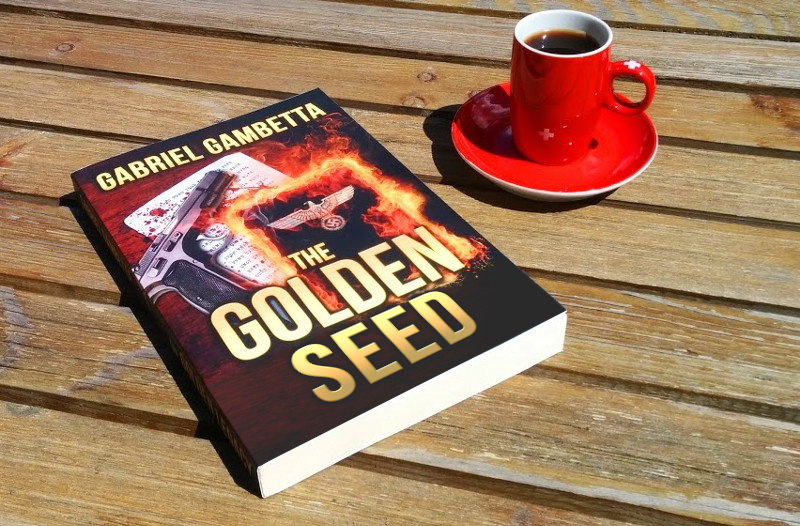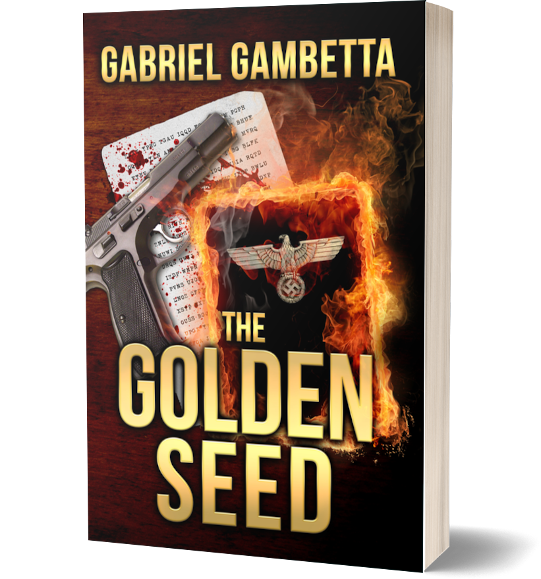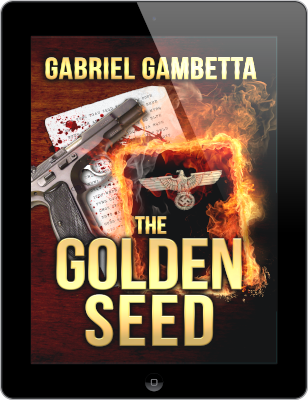How I wrote my first novel during my daily commute
Writing a 330 page novel aboard Swiss trains, 40 minutes at a time.
It is said that everyone has a book in them. Ask around and you’ll find most people have an amazing idea that would make for a great story — if they only had the time to write it! Having a full-time job, family, friends, and all these annoying “adult” responsibilities leaves little time to write. But I found the time I needed in the otherwise dead time known as “the commute”.

I love Swiss trains. They’re comfortable, quiet, and always on time (some of these facts actually made it into the novel itself). But perhaps most importantly, I could almost always find a seat.
Reverse-engineering Dan Brown
Back in 2010 I found myself reading my third or fourth Dan Brown novel and thinking two things: “This man knows how to write page-turners” and “I should be able to do this”. I had written short stories before, but could I pull off a novel?
I set out to work. I did what felt natural, but in retrospect may have been a product of my engineering background: I created a spreadsheet with a Dan Brown novel in each column and a story point or character relationship in each row. Then I re-read the novels, taking copious notes as I went along, and filled this table.
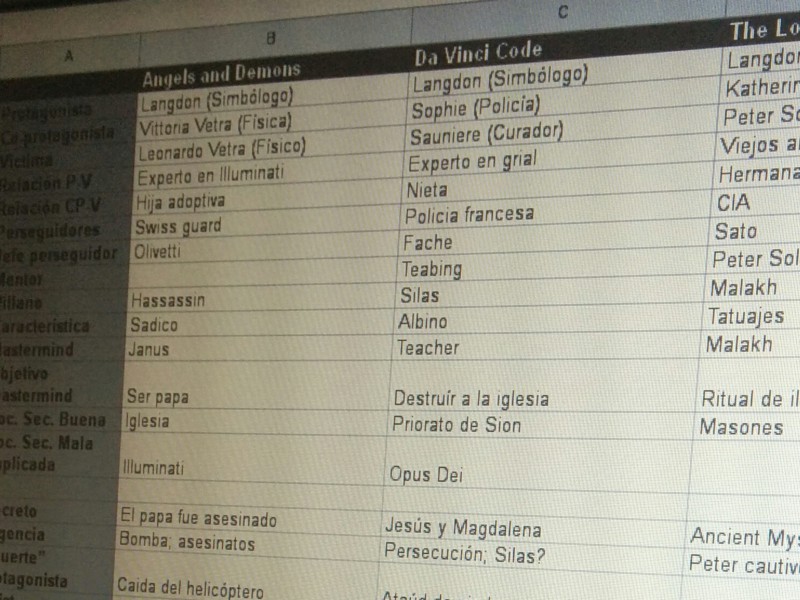
Soon the structure underlying The Da Vinci Code and Angels and Demons and The Lost Symbol was laying bare before my eyes. I could see why the stories worked.
I had reverse-engineered Dan Brown.
So I took the obvious next step: I added a new column named _“my novel”_and set out to fill in the blanks. Although it ended up looking quite different, this column was the basis for what later became my first novel, The Golden Seed.
Four more years would pass before I had the first copy of the novel in my hands. As it turns out, writing is a lot of work.
Laying out solid foundations
I became obsessed with story structure. I needed to understand why novels and movies worked. I had to know the blueprint. I read book after book after book, from The Hero with a Thousand Faces to _The Screenwriter’s Bible_to the controversial Save the Cat, until I could see the underlying themes and principles that unified all the different structures and methodologies.
Writers come in two flavours: those who plan and those who don’t. Stephen King famously starts writing his novels without knowing how they will end; unsurprisingly, some people think that endings aren’t one of Stephen King’s strengths. I admire his bravery, but I know this wouldn’t work for me — I would be terrified of not knowing what I’d write next (as it turns out, this was one of the reasons I could write my novel during my daily commute).
I loosely followed the Snowflake method, devised by a novelist who also has a PhD in Theoretical Physics. In a nutshell, you describe the plot of your novel in a single sentence; then in a single paragraph; then in four paragraphs; then in four pages; then you make a list of every scene in the story; then you write. This fractal structure gives the Snowflake method its name.
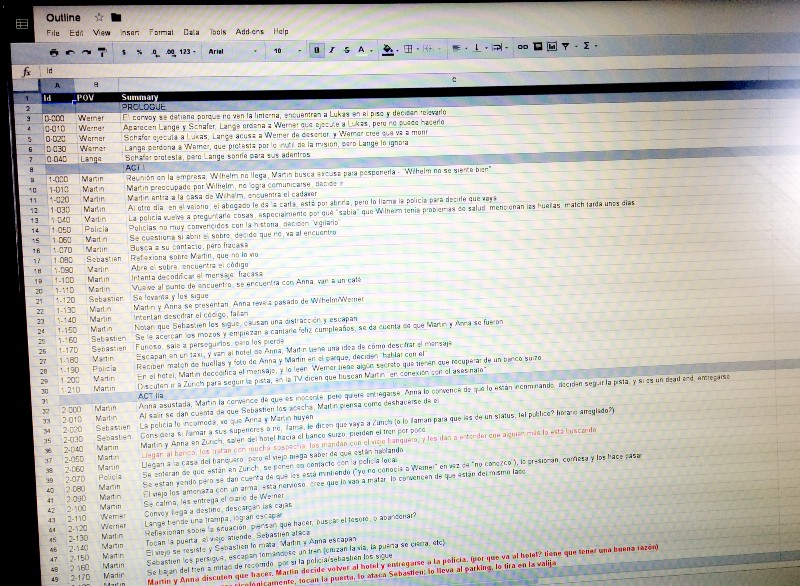
My scene list ended up containing roughly 80 entries. I gave a lot of thought to the story structure, making sure there were no plot holes, that the actions of every character made sense at all times given their knowledge, situation and goals, and that the story itself was exciting and compelling.
This process took me three years. Of course, I wasn’t working on the novel full time — shortly after beginning this project, I moved to Zürich and started working at Google, so the novel was abandoned for months at a time.
But this also meant that my full time job and other life responsibilities didn’t leave a lot of time left to turn this list of 80 items into a 300+ page novel.
Fighting writer’s block on Swiss trains
My commute from Winterthur to Zürich Enge was around 40 minutes long. I developed the habit of sitting down and taking out my laptop in a single move. Writing requires focus so I had to train myself to put on my “writing hat” as soon as I sat down.
And so I started writing my novel, in two 40 minute chunks per day.

This is where having my list of 80 scenes was extremely helpful. I began each writing “session” by reading the one-line description of the current and previous scenes, and the last couple of paragraphs I had written; this was enough to restore my mental context and continue writing where I had left before.
An unexpected benefit of this approach is that it also minimised the dreaded writer’s block. I discovered that writer’s block comes in two variants: not knowing what needs to happen next in the story, and not knowing how to write it. The first one was solved by having my 80 scene list; I always knew what needed to happen next. The second one was a consequence of under-specifying some of the scenes. “The protagonist escapes”. But how, exactly? Most of the time I just went ahead and improvised, giving myself permission to suck and promising myself I’d edit later, but more often than not, the results were reasonably good.
The finishing touches
It took me another year to write the full text of the novel on the train, and a few months to have a finished product — including editing passes, getting a cover, formatting the book for ebooks and print, and so on (this process is detailed in this article).
But I couldn’t be happier with the results. The Golden Seed has been well received. Some people have read it in a single sitting, which may be the best compliment I could have expected. And just the fact of holding your actual, tangible, physical book in your hands is hard to describe.
